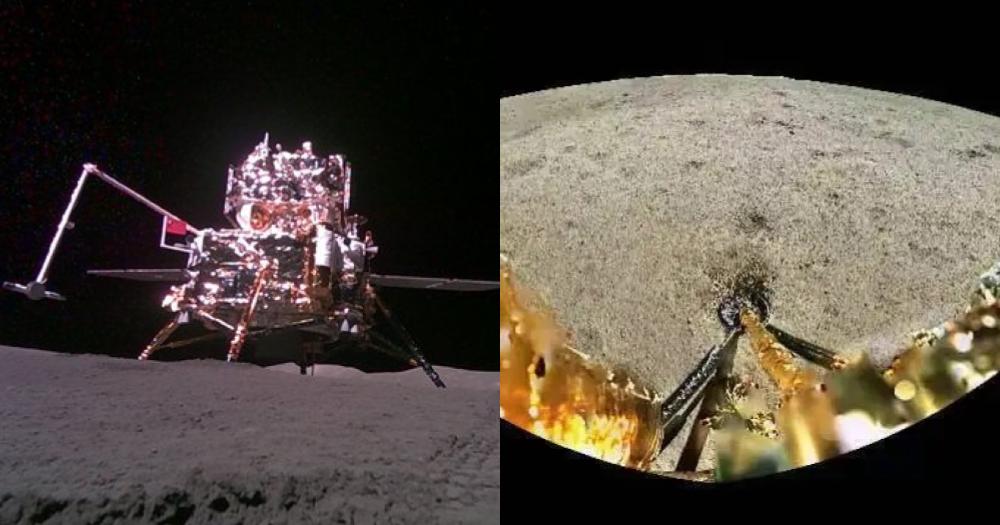China's National Space Administration's Chang'e-6 spacecraft has successfully landed on the far side of the moon, part of a sample return mission, the first of its kind.
To the moon!
According to China Daily, the Chang'e-6 spacecraft launched on May 3 from the Wenchang Space Launch Centre in Hainan, reaching lunar orbit soon after on May 8.
The spacecraft landed on the moon's far side on Jun. 1, in the Apollo Basin, a crater on what is known as "dark side" or far side of the moon.
This hemisphere of the moon is tidally locked, meaning that it never presents itself to the earth, making exploration extremely difficult.
The Chang'e-6 managed to land safely, itself no mean feat, but soon after it began drilling lunar rocks in the area, with the intention of collection two kilograms of moon rock, also known as regolith, and storing them in the lander's upper portion.
The lander also launched a robotic rover, as well as unfurling a small Chinese flag, with the former taking a picture of the landed spacecraft, along with a flag.
Chang'e-6 has completed sampling on the back of moon, took a selfie using a small lunar rover, unfolded Chinese flag, and the ascender returned to lunar orbit in preparation for returning to Earth. pic.twitter.com/OxJYuwmj5B
— Shanliren (@wlmphi) June 4, 2024
The Chang'e-6 mission was undertaken with the cooperation of the European Space Agency, and was carrying several scientific devices from three European space agencies, that of France, Italy, and Sweden.
With the rocks safely stored within itself, the upper portion of the Chang'e spacecraft then took off into lunar orbit on Jun. 3, and is awaiting a rendezvous with the mission's lunar orbiter.
After the pair have docked, the craft will return to earth to return the moon rocks to earth, where they will be studied by China's scientist.
This will mark the first time that lunar rocks have been returned to the Earth from the far side of the moon.
The moon is flat
The event was not without some minor controversy however.
The South China Morning Post reported that during the launch of the Chang'e-6, China's state broadcaster CCTV interviewed China's lunar probe program's deputy chief, Pei Zhaoyu.
During the interview, he said that one of the spacecraft's planned landing points was in the Apollo basin, but stumbled over his words.
Conspiracy theorists in China made a connection between the Apollo Basin and the Apollo Moon Missions of the 1960s and 1970s, conducted by the United States, now China's main rival.
Making that connection, they then went on to claim that Pei was implying that the basin was empty and there was no evidence of the Apollo Moon Mission or of the U.S.'s manned landing on the moon.
The China Association for Science and Technology stepped in to try to stop the conspiracy theorists, saying that the theories were "groundless".
Saying that people were questioning the Apollo landings out of "simple feelings" for their country, the association called online users to "remain rational and think independently, and seek truth from facts".
It also made clear that the Apollo landings and the Apollo Basin were only linked by name, as the crater and features within it were named for people associated with the Apollo missions.
Boom time on the moon
China previously successfully landed a spacecraft on the far side of the moon, having done so in 2019 with Chang'e-4, and has successfully returned lunar rocks from the moon's near side with Chang'e-5.
It comes amidst a series of pioneering efforts on the moon from Asian countries, with India successfully landing it's Chandrayaan spacecraft on the moon's South Pole in 2023.
The Chang'e-6 is expected to return to earth by the end of June, landing in Inner Mongolia.
Related stories
Top image via CNSA & @CNSAWatcher/X

If you like what you read, follow us on Facebook, Instagram, Twitter and Telegram to get the latest updates.



